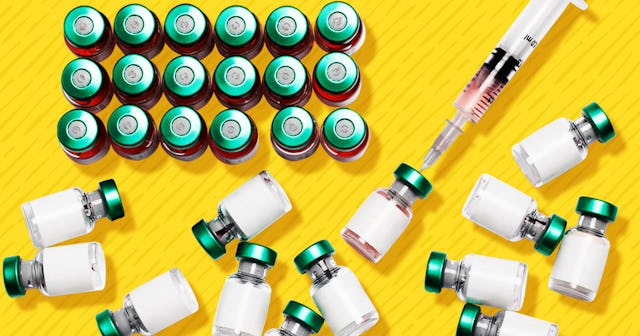A Potential Coronavirus Vaccine Has Made It Through The First Testing Phase -- With Promising Results

It’s fair to say that at no point in our brief, roughly two-century history of producing vaccines has the worldwide scientific community been in such a fervor to develop a vaccine. The novel coronavirus has presented challenges unlike any virus before it. Few viruses have been so consistently inconsistent in morbidity and mortality. Not in my research, and certainly not in my lifetime, can I identify a virus that is all at once highly fatal for certain high-risk populations; sporadically lethal or crippling for some who are young and healthy; and harmless to the point of being symptomless for other random populations. And the 1918 influenza pandemic was the last and perhaps only time a virus so dramatically impacted the world’s economy. Our hope for a return to social and economic normalcy hinges on the production of a safe, effective vaccine.
Moderna, Inc., of Cambridge, Mass., has emerged as one of the frontrunners in this endeavor. In collaboration with the National Institute of Allergy and Infectious Diseases, the company began human trials on a group of about 600 test subjects on May 7. The primary goal for that first phase was to determine if the vaccine was safe. Initial results, announced May 18, suggest that not only does the vaccine appear to be safe, it also seems to elicit the kind of immune response necessary to prevent disease.
For the first part of the trial, 45 volunteers were divided into three groups, with three different dosage levels administered to each group. All groups receive a booster shot one month after their initial dose. Moderna reported that trial participants have had only mild side effects such as redness at the injection site, headache, fever, and flu-like symptoms, none of which lasted for more than a day. In other words, similar to the mild side-effects from other vaccines like the flu vaccine.
The other thing Moderna scientists are looking for with this trial is to verify that the vaccine induces coronavirus antibodies. Each of the 45 participants, at all three dosage levels, did produce antibodies. Even more promising, the first 8 subjects who received their second booster shot were confirmed to be producing “neutralizing antibodies,” meaning their antibodies are able to stop the virus from infecting human cells. When participants’ neutralizing antibodies were compared to those of patients who had contracted COVID-19 in the community and have since recovered, the antibody levels matched. Though, keep in mind, these parts of the testing are done in a lab—none of the study participants themselves are being exposed to live coronavirus.
Moderna has been given the go ahead by the Food and Drug Administration (FDA) to begin a second phase of testing which will involve an additional 600 people, half of whom are over 55. The company hopes that by July they’ll be able to expand to a third phase of testing to include thousands of healthy people to verify that the vaccine does indeed prevent disease. Phase III testing is considered “field testing” and is generally performed in circumstances that should mimic routine use of the vaccine.
Moderna developed its vaccine using mRNA (messenger RNA), a molecule that has been used and studied for several years in the production of vaccines, though none have yet been licensed by the Food and Drug Administration. Compared to more traditional vaccines, mRNA vaccines are promising in that they are highly potent, can be developed rapidly, and can be manufactured and administered inexpensively and safely.
Moderna said it took only 63 days from the time Chinese scientists shared the coronavirus genetic sequence to developing and administering their first vaccine dose to a human volunteer. It is one of many companies racing to be the first to produce a safe, effective vaccine. Other frontrunners include BioNTech, a German biotech company collaborating with Chinese Fosun Pharma and American Pfizer, and CureVac, another Germany company expected to begin human trials this summer. The University of Oxford, working with AstraZeneca, has also shown promising results with early trials.
As for Moderna, the company hopes to have a vaccine available to the public by the end of this year or early 2021. Dr. Tal Zaks, the company’s chief medical officer, said in an interview with The New York Times that though they’re unsure how many doses could be made immediately available, “We’re doing our best to make it as many millions as possible.”
As we continue to wait for scientists to do their jobs, let’s continue to social distance and wear masks whenever we have to go out.
This article was originally published on